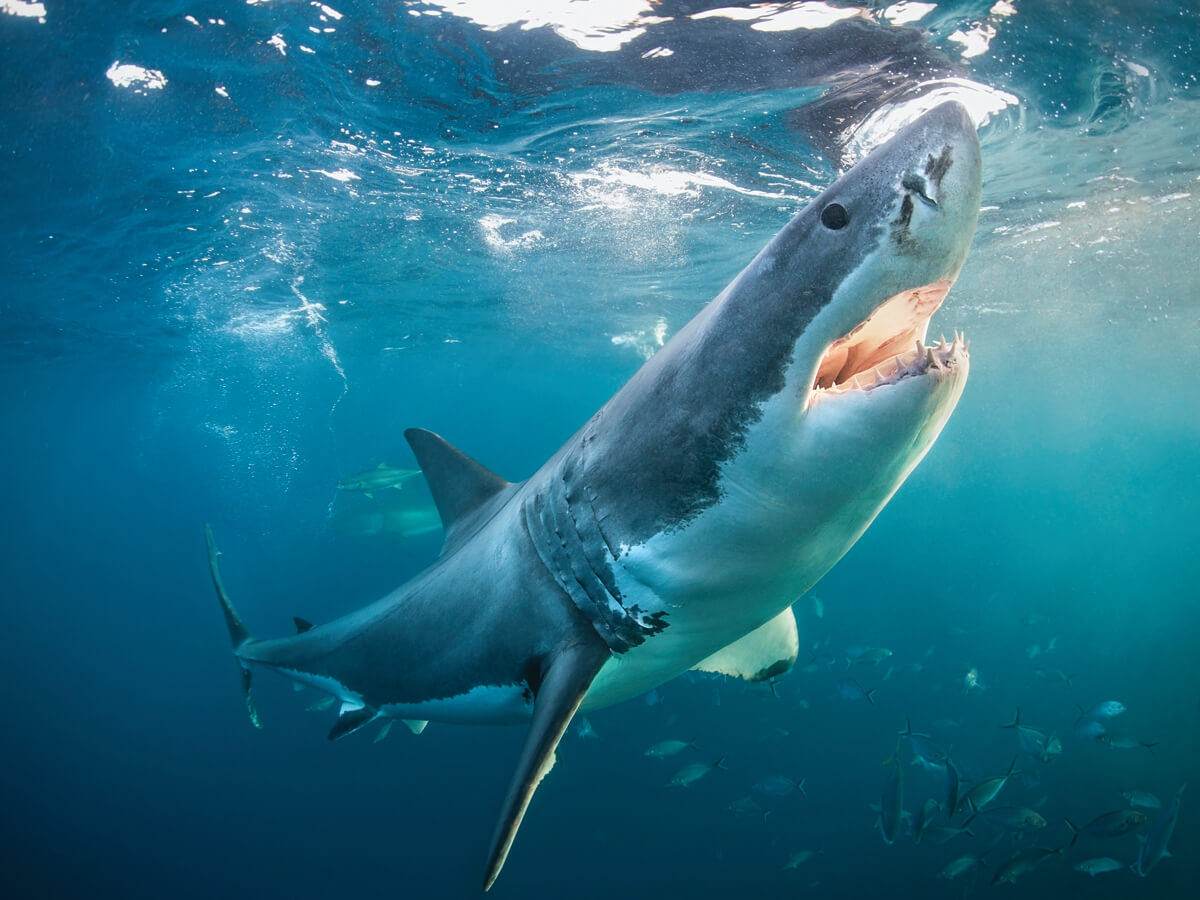Swimming Like a Shark
Sharks move so quickly and seamlessly through the ocean that they’ve been compared to torpedoes. For decades, researchers have studied shark skin to find specific elements that could be applied to anything from the hulls of racing yachts to swimsuits to help reduce drag.
Most notably, they identified v-shaped ridges — which engineers developed artificially as riblets. Applied to surfaces, riblets can reduce drag by as much as 10 percent. While manufacturing advancements like 3-D printing have helped ease the cost and time-investment in creating such surfaces, computationally complex flow equations have challenged the optimization of riblet design.
Mitul Luhar, assistant professor of aerospace and mechanical engineering at USC Viterbi, and Andrew Chavarin, a mechanical engineering Ph.D. candidate, have taken up that challenge by developing an algorithm that reduces complexity and helps determine the exact shape, size and spacing of an optimal riblet design.
“Depending on the specific riblet geometry being tested, this could take as little as one minute on a laptop,” Luhar said. “In other words, hundreds of geometries can be tested in a day without requiring high-performance computing capabilities.”
The algorithm isolates the key building blocks of the turbulent flow field — where the fluid motion is undergoing constant changes in speed and direction — by identifying what flow features are most amplified by the equations governing fluid flow. While these equations are complex and turbulent flow fields are full of nuance, Luhar and Chavarin found that just a few key building blocks can provide enough information to work out the riblet recommendations for the entire flow field. It turns out that the amplification of one particular flow feature is a very useful predictor of overall drag reduction.
Once this flow feature is isolated, the algorithm proposes and evaluates different riblet designs. Luhar and Chavarin focused initially on simple riblet designs. From here, they will seek to adapt the algorithm to evaluate three-dimensional or multiscale geometries.
“Riblet geometries tested in the past were relatively simple, usually blades, rectangles or triangles,” Luhar explained. “Additive manufacturing techniques, for example, 3-D printing, have enabled the fabrication of much more complex surface features and geometries. However, testing all possible geometries in high-fidelity numerical simulations or laboratory experiments would be prohibitively time-consuming and expensive.”
Their research has varied implications, including benefits beyond drag reduction. “I see significant scope for developing ‘multi-functional’ surfaces that accomplish other things, for example, reduce icing, noise and fouling — an accumulation of unwanted materials on a surface,” Luhar said.
Their research was published in the American Institute of Aeronautics and Astronautics (AIAA) Journal. It is based on work supported by the Air Force Office of Scientific Research under award FA9550-17-1-0142 (program manager Gregg Abate).




